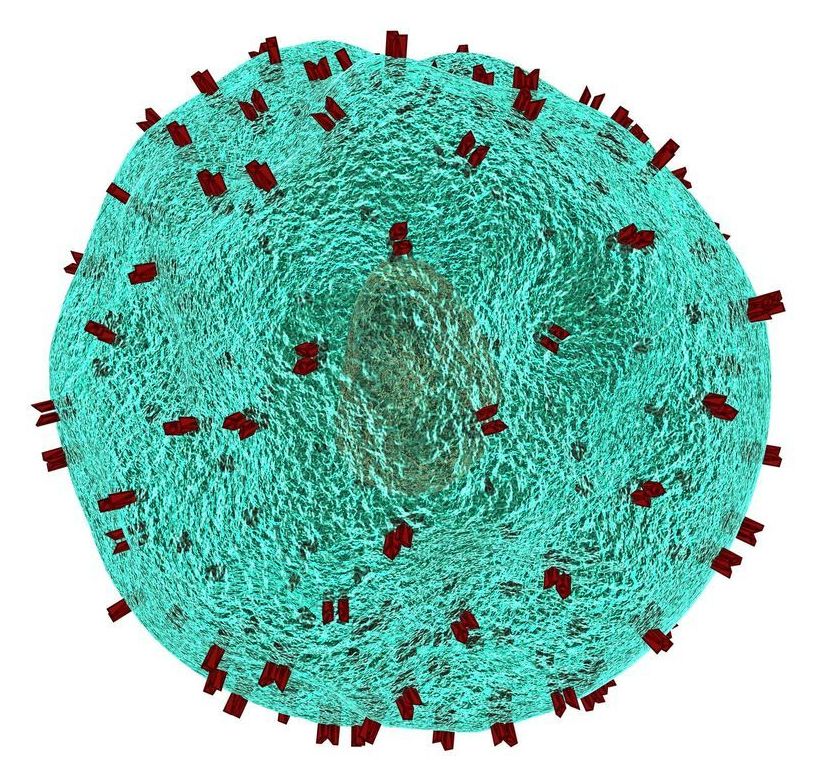Page 8075
Dec 24, 2019
Research on Application of Artificial Intelligence in Computer Network Technology
Posted by Müslüm Yildiz in categories: information science, internet, robotics/AI
This paper attempts to apply artificial intelligence (AI) to computer network technology and research on the application of AI in computing network technology.
With the continuous expansion of the application scope of computer network technology, various malicious attacks that exist in the Internet range have caused serious harm to computer users and network resources.
By studying the attack principle, analyzing the characteristics of the attack method, extracting feature data, establishing feature sets, and using the agent technology as the supporting technology, the simulation experiment is used to prove the improvement effect of the system in terms of false alarm rate, convergence speed, and false-negative rate, the rate reached 86.7%. The results show that this fast algorithm reduces the training time of the network, reduces the network size, improves the classification performance, and improves the intrusion detection rate.
Dec 24, 2019
Evolutionary Changes in Brain Potentially Make us More Prone to Anxiety
Posted by Xavier Rosseel in categories: biotech/medical, evolution, genetics, neuroscience
Neurochemicals such as serotonin and dopamine play crucial roles in cognitive and emotional functions of our brain. Vesicular monoamine transporter 1 (VMAT1) is one of the genes responsible for transporting neurotransmitters and regulating neuronal signaling. A research team led by Tohoku University has reconstructed ancestral VMAT1 proteins, revealing the functional changes in neurotransmitter uptake of VMAT1 throughout the course of human evolution.
Human bodies are made up of millions of cells. Each individual contains a specific set of instruction of codes that make up all of a living thing’s genetic material. These instructions are known as genomes. PhD candidate Daiki Sato and Professor Masakado Kawata of the Graduate School of Life Sciences at Tohoku University, and two of the authors involved in the current study, previously discovered VMAT1 to be one of the genes that had evolved throughout human lineage.
VMAT 1 contains two human-specific mutations, or where the genomes changed, with the change being represented as 130Glu to 130Gly and from 136Asn to 136Thr. Previous studies have shown that having the new 130Gly/136Thr variant decreases the uptake of neurotransmitters and is associated with higher depression and/or anxiety. In this study, Sato, Kawata and their colleagues revealed the evolutionary changes in neurotransmitter uptake of VMAT1 by reconstructing ancestral VMAT1 proteins. First they applied a fluorescent substrate to visualize and quantify the neurotransmitter uptake of each genotype. The ancestral (130Glu/136Asn) VMAT1 protein exhibited an increased uptake of neurotransmitters compared to a derived (130Gly/136Thr) genotype. Given that the derived (130Gly/136Thr) genotype is shown to be associated with depression and/or anxiety in modern human populations. “This results of our study reveal that our ancestors may have been able to withstand higher levels of anxiety or depression,” noted the authors.
Continue reading “Evolutionary Changes in Brain Potentially Make us More Prone to Anxiety” »
Dec 24, 2019
Electronics at the speed of light
Posted by Saúl Morales Rodriguéz in categories: computing, mobile phones, physics
A European team of researchers including physicists from the University of Konstanz has found a way of transporting electrons at times below the femtosecond range by manipulating them with light. This could have major implications for the future of data processing and computing.
Contemporary electronic components, which are traditionally based on silicon semiconductor technology, can be switched on or off within picoseconds (i.e. 10-12 seconds). Standard mobile phones and computers work at maximum frequencies of several gigahertz (1 GHz = 109 Hz) while individual transistors can approach one terahertz (1 THz = 1012 Hz). Further increasing the speed at which electronic switching devices can be opened or closed using the standard technology has since proven a challenge. A recent series of experiments—conducted at the University of Konstanz and reported in a recent publication in Nature Physics—demonstrates that electrons can be induced to move at sub-femtosecond speeds, i.e. faster than 10-15 seconds, by manipulating them with tailored light waves.
“This may well be the distant future of electronics,” says Alfred Leitenstorfer, Professor of Ultrafast Phenomena and Photonics at the University of Konstanz (Germany) and co-author of the study. “Our experiments with single-cycle light pulses have taken us well into the attosecond range of electron transport.” Light oscillates at frequencies at least a thousand times higher than those achieved by purely electronic circuits: One femtosecond corresponds to 10-15 seconds, which is the millionth part of a billionth of a second. Leitenstorfer and his team from the Department of Physics and the Center for Applied Photonics (CAP) at the University of Konstanz believe that the future of electronics lies in integrated plasmonic and optoelectronic devices that operate in the single-electron regime at optical—rather than microwave—frequencies. “However, this is very basic research we are talking about here and may take decades to implement,” he cautions.
Dec 24, 2019
Relative orbital velocities – planet motions, rotations and tilts to scale
Posted by Michael Lance in category: space
Dec 24, 2019
Solar power from ‘the dark side’ unlocked by a new formula
Posted by Dan Kummer in categories: solar power, sustainability
Engineers calculate the ultimate potential of next-generation solar panels
WEST LAFAYETTE, Ind. — Most of today’s solar panels capture sunlight and convert it to electricity only from the side facing the sky. If the dark underside of a solar panel could also convert sunlight reflected off the ground, even more electricity might be generated.
Double-sided solar cells are already enabling panels to sit vertically on land or rooftops and even horizontally as the canopy of a gas station, but it hasn’t been known exactly how much electricity these panels could ultimately generate or the money they could save.
Dec 24, 2019
Researchers identify immune-suppressing target in glioblastoma
Posted by Paul Battista in categories: biotech/medical, neuroscience
Researchers at The University of Texas MD Anderson Cancer Center have identified a tenacious subset of immune macrophages that thwart treatment of glioblastoma with anti-PD-1 checkpoint blockade, elevating a new potential target for treating the almost uniformly lethal brain tumor.
Their findings, reported in Nature Medicine, identify macrophages that express high levels of CD73, a surface enzyme that’s a vital piece of an immunosuppressive molecular pathway. The strong presence of the CD73 macrophages was unique to glioblastoma among five tumor types analyzed by the researchers.
“By studying the immune microenvironments across tumor types, we’ve identified a rational combination therapy for glioblastoma,” says first author Sangeeta Goswami, M.D., Ph.D., assistant professor of Genitourinary Medical Oncology.
Dec 24, 2019
Researchers develop new method that could facilitate cancer diagnosis
Posted by Paul Battista in categories: biotech/medical, genetics
Researchers led by the European Molecular Biology Laboratory (EMBL) in Heidelberg and the Center for Bioinformatics at Saarland University in Saarbrücken, Germany, have developed a cheaper and faster method to check for genetic differences in individual cells. It outperforms existing techniques with respect to the information received. This new method could become a new standard in single-cell research, and potentially for clinical diagnosis in disease genetics, including cancer. The results have been published in Nature Biotechnology.
“Our new method to study genetic variations in individual cells could transform the field of mutation detection,” says Ashley Sanders, one of the lead authors of the study, working at EMBL Heidelberg, Germany. The method she and her colleagues developed, termed single cell tri-channel processing (scTRIP), allows them to study genetic variations within the DNA of a single cell and measure genetic variations directly as they form in new cells. In contrast to existing methods that were able to detect only large-scale changes in the genome, scTRIP can detect small-scale changes along with many types of genetic variations that were invisible using other single-cell methods.
The researchers tested their method in patient-derived leukemia cells. In their sample, the team found four times more variants in the patient than were detected by standard clinical diagnostics. These included a missed clinically relevant translocation that drove the overexpression of a cancer-causing gene. They also observed a catastrophic chromosome rearrangement that was missed in the initial leukemia diagnosis. It probably occurred when a single chromosome shattered and was then glued back together in a rearranged order.
Dec 24, 2019
Plant-rich diet protects mice against foodborne infection, researchers find
Posted by Paul Battista in categories: food, health
Mice fed a plant-rich diet are less susceptible to gastrointestinal (GI) infection from a pathogen such as the one currently under investigation for a widespread E. coli outbreak tied to romaine lettuce, UT Southwestern researchers report. A strain of E. coli known as EHEC, which causes debilitating and potentially deadly inflammation in the colon with symptoms such as bloody diarrhea and vomiting, is implicated in several foodborne outbreaks worldwide each year.
“There has been a lot of hearsay about whether a plant-based diet is better for intestinal health than a typical Western diet, which is higher in oils and protein but relatively low in fruits and vegetables,” says Vanessa Sperandio, Ph.D., professor of microbiology and biochemistry at UT Southwestern. “So we decided to test it.”
Her study on a mouse model of EHEC is published this week in Nature Microbiology.


















